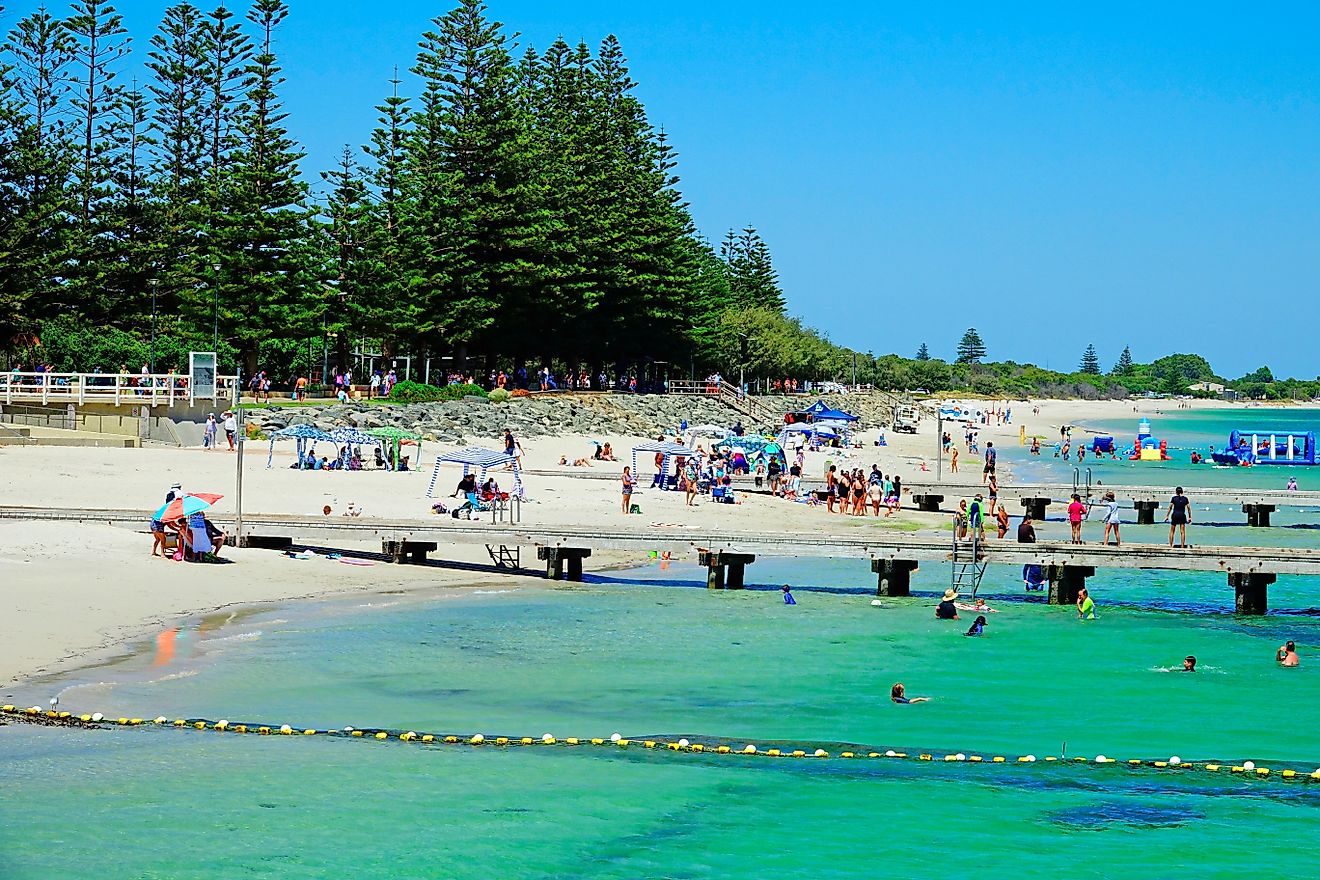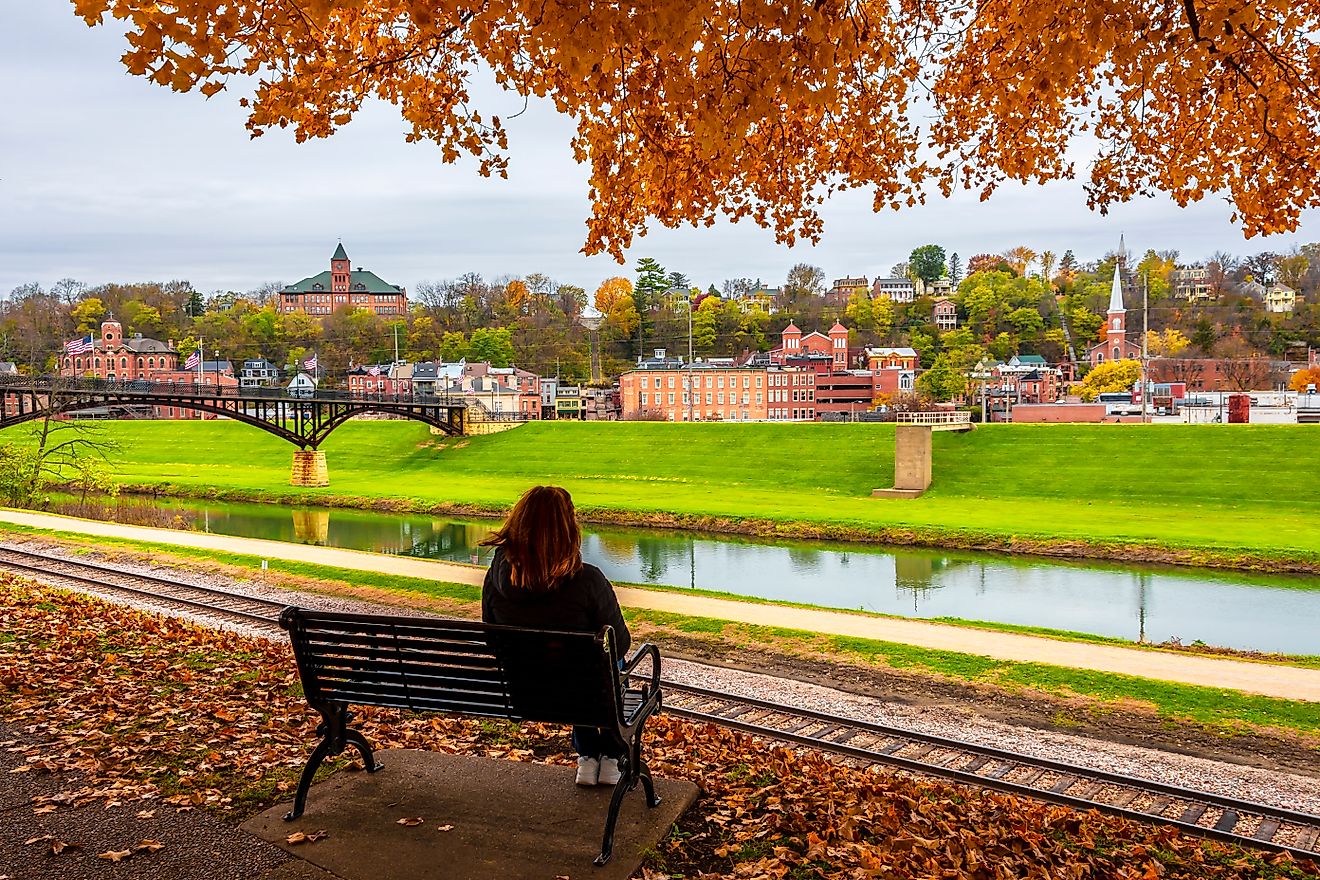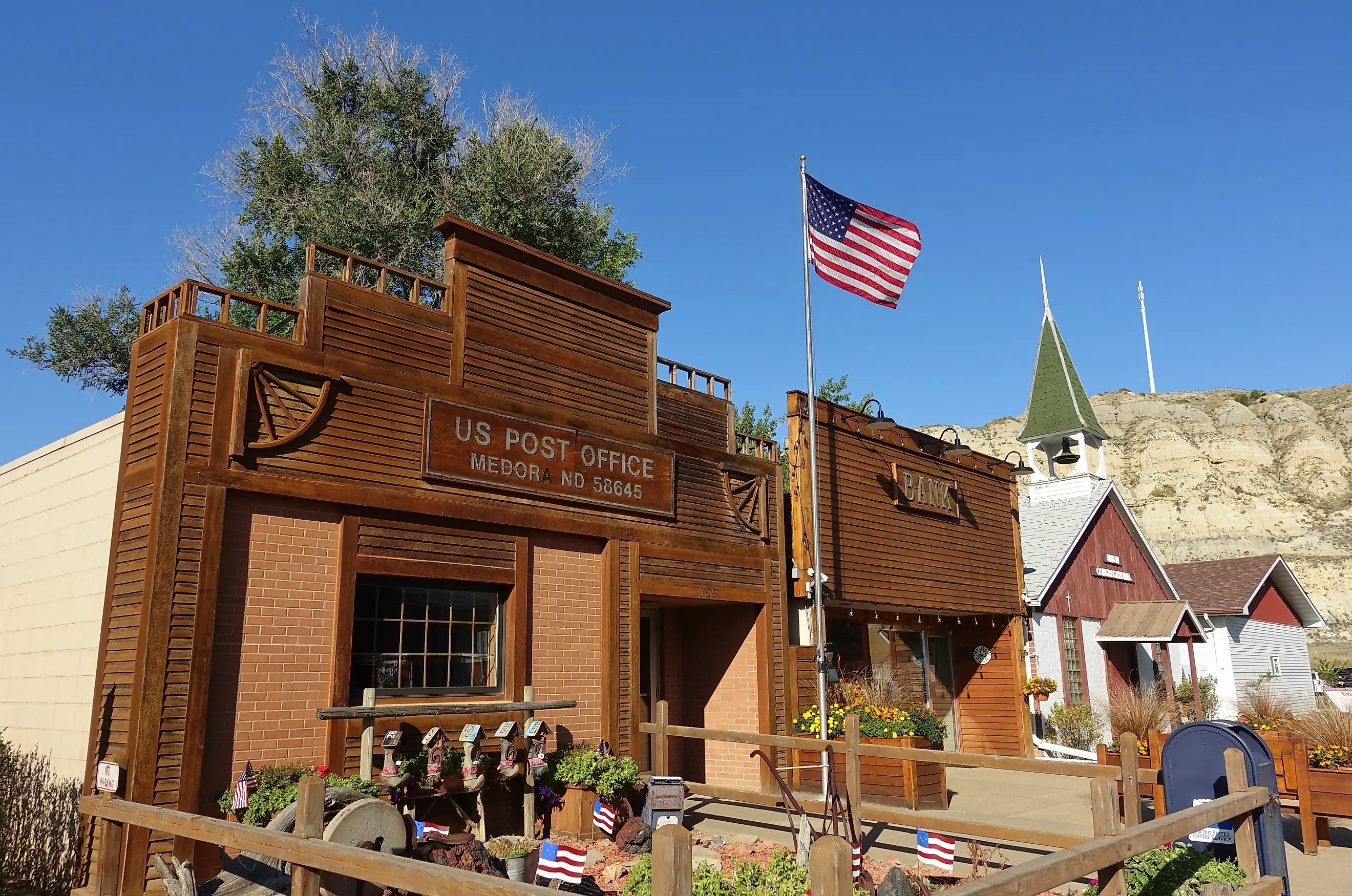
Discover The Lesser Known Towns Of North Dakota
North Dakota’s lesser-known towns capture the quiet beauty and frontier spirit of the Great Plains. From the rugged canyons surrounding Medora to the vast blue waters of Devils Lake and the rolling hills near Garrison, these communities reveal landscapes that feel untouched by time. Each town holds its own mix of outdoor adventure, history, and scenery—perfect for travelers seeking wide horizons, peaceful escapes, and the untold stories of America’s northern heartland.
Medora
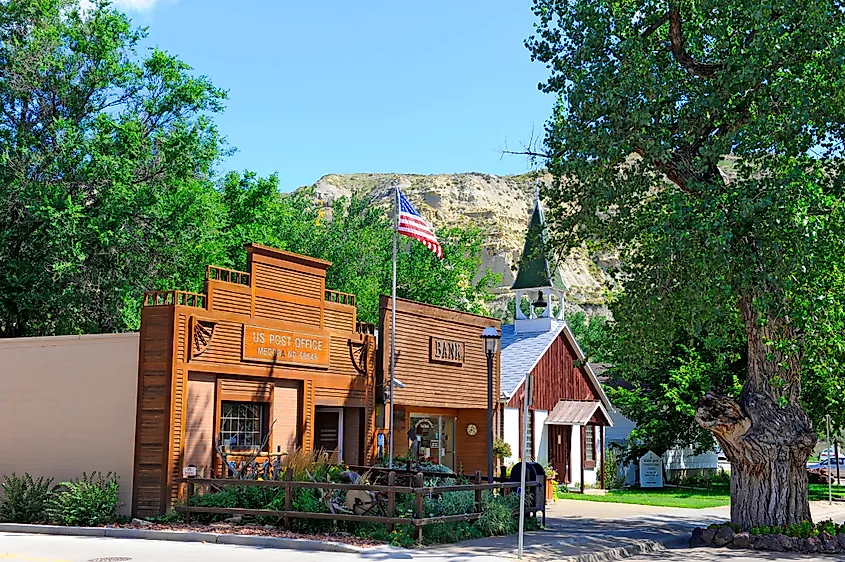
At the heart of the North Dakota Badlands lies Medora, a small community rich in Western spirit and nature. As the gateway to the South Unit of Theodore Roosevelt National Park, it is a place where bison, elk, and deer roam amid rugged buttes and sweeping prairie. Nearby, Rough Rider State Park draws adventurers to canoe or kayak the Little Missouri River—North Dakota’s only State Scenic River—and explore the 144-mile Maah Daah Hey Trail System, a route first named by the Mandan people to mean “an area that has been or will be around for a long time."
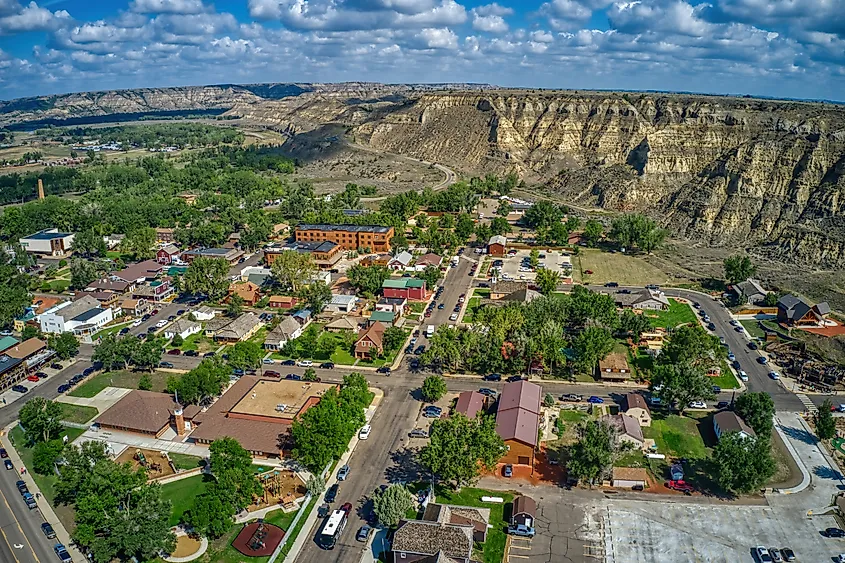
As evening falls, the stage lights up for the legendary Medora Musical, a high-energy outdoor show packed with country tunes, comedy, and nods to frontier history. Horses thunder across the stage, fireworks fill the sky, and families soak in a night of pure Americana in one of the state’s most unforgettable small towns.
Garrison
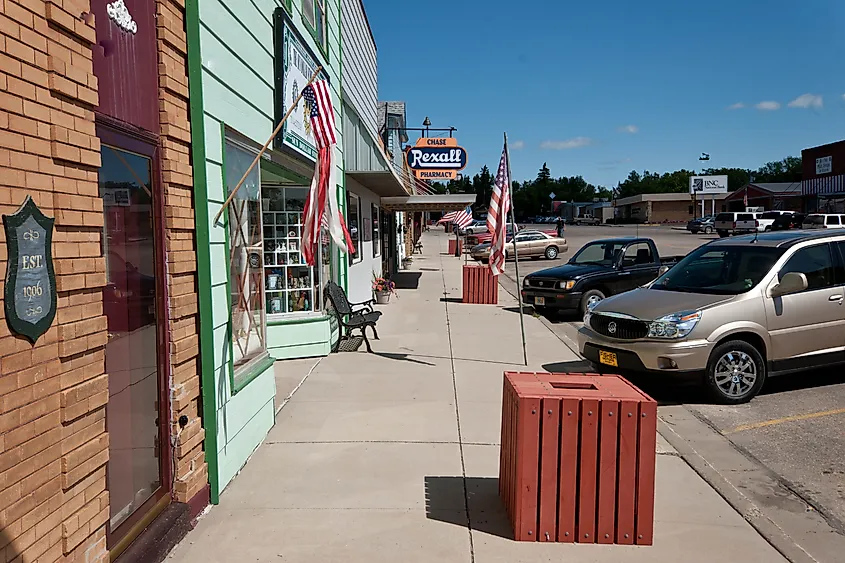
Along the north shore of Lake Sakakawea, Garrison is a lakefront escape known as North Dakota’s “Walleye Capital.” Just three miles south, Fort Stevenson State Park spans scenic bluffs, drawing tourists with its panoramic water views, nature trails, and year-round recreational opportunities. Boaters can enjoy two marinas, complete with ramps, rentals, and fish-cleaning stations, while hikers and campers take in the calm rhythm of the lakeside landscape.
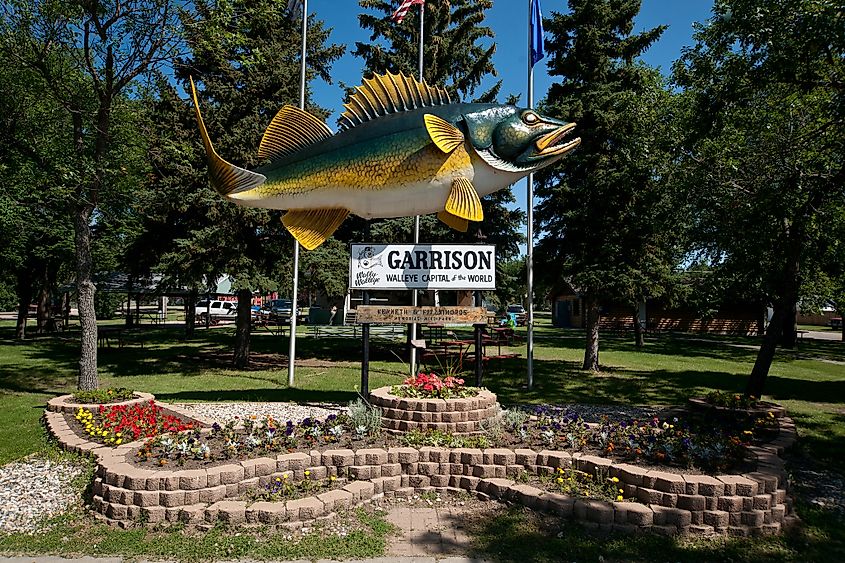
Not far away, Indian Hills Resort celebrates decades of outdoor adventure, featuring activities such as fishing for walleye, salmon, and bass, as well as pheasant and waterfowl hunting across the surrounding terrain. Rustic log cabins, tent sites, and modern lodges make it a comfortable base for a weekend on the water. Meanwhile, Garrison Golf Course keeps the fun going with a scenic 9-hole layout and a state-of-the-art simulator—making this hidden lakeside town a four-season retreat for outdoor enthusiasts.
Devils Lake
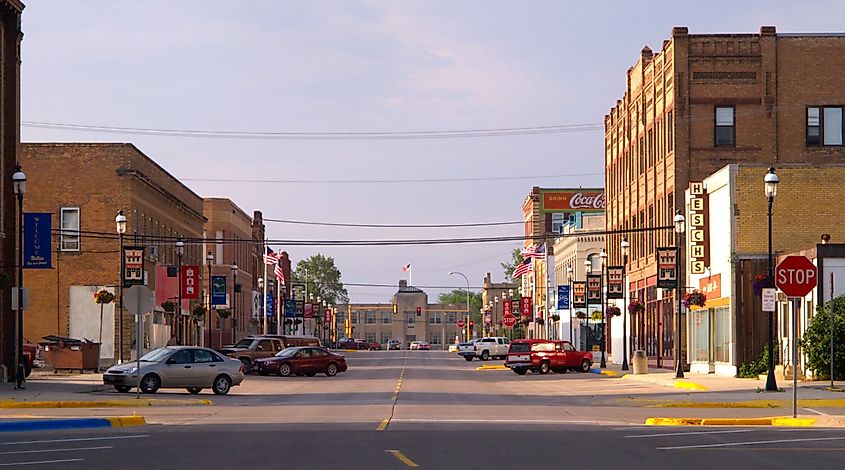
Surrounded by wide-open skies and shimmering water, Devils Lake takes its name from North Dakota’s largest natural lake—a destination celebrated as the “Perch Capital of the World.” The vast lake draws anglers, boaters, and water-sport enthusiasts with its excellent facilities and easy access from numerous ramps. Visitors can spend the day fishing, sailing, or simply soaking in the peaceful lakeside atmosphere that defines this hidden northern town.
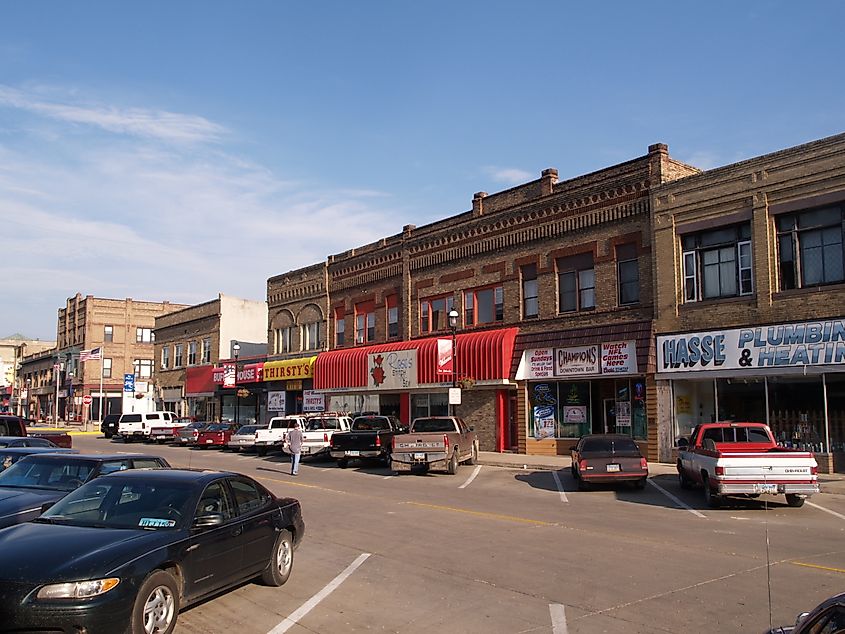
Roosevelt Park spans 21 acres of lush green space, featuring playgrounds, picnic shelters, and sports fields, making it a vibrant hub for families and community events. Just beyond the city, Grahams Island State Park provides pristine trails and excellent fishing spots along the shoreline. To connect with local history, the Lake Region Heritage Center highlights the area’s cultural roots through exhibits, art displays, and hands-on activities that bring Devils Lake’s rich story to life.
Bottineau
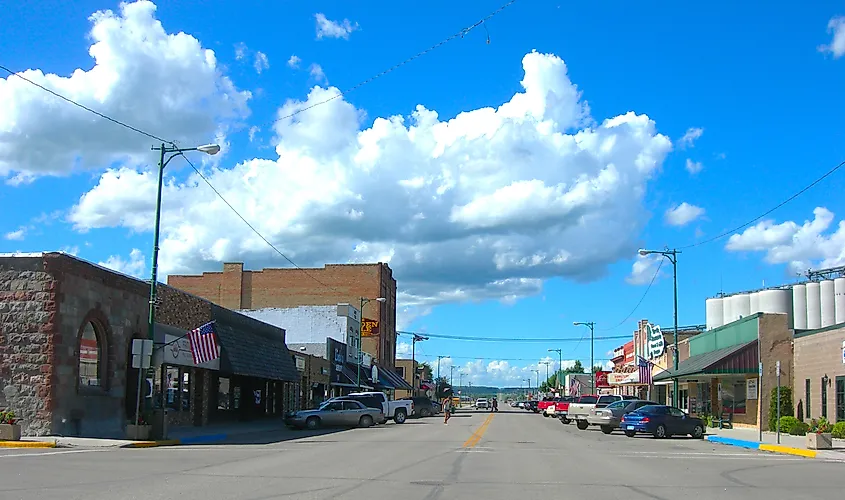
Bottineau, tucked near the scenic Turtle Mountains, is a small northern town known for its quirky landmark, “Tommy Turtle,” the world’s largest turtle statue. Standing thirty feet tall since 1978, it symbolizes the region’s connection to the nearby hills and has become an iconic roadside stop. Just north of town, Bottineau Winter Park draws tourists year-round with its tubing, skiing, and snowboarding trails. During the warmer months, the area turns into a hub for hiking and biking, while Annie’s House serves as a welcoming lodge for gatherings and events.
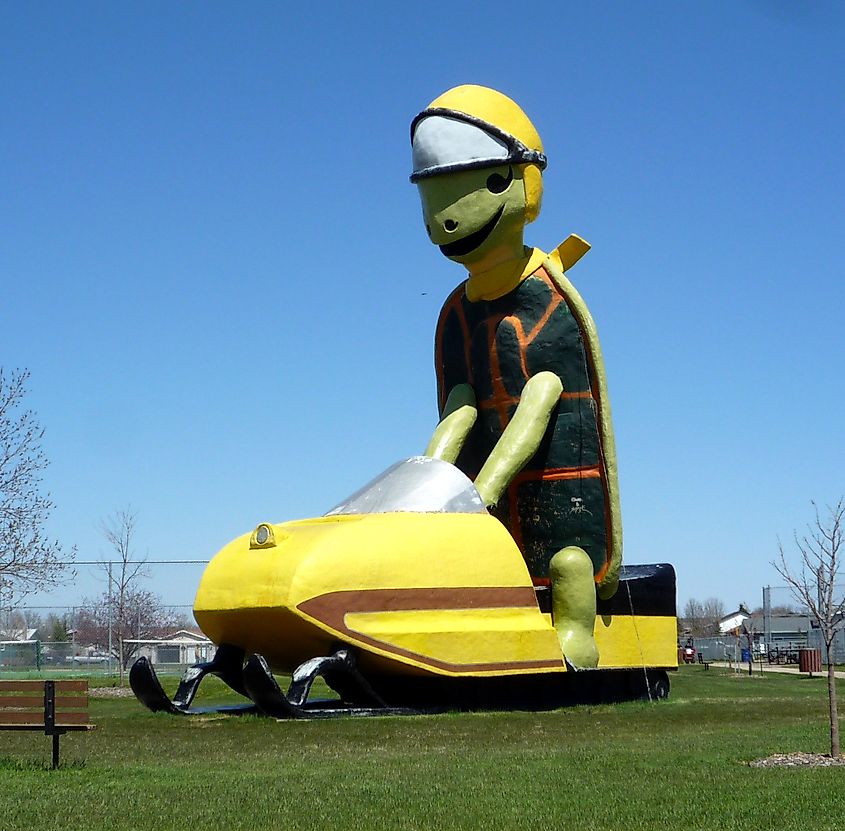
A short drive away, Lake Metigoshe State Park immerses visitors in the natural beauty of the Turtle Mountains, surrounded by rolling hills, clear lakes, and stands of aspen. For a one-of-a-kind experience, Mystical Horizons, an astronomical site often referred to as the “Stonehenge of the Prairie,” invites travelers to enjoy sweeping views and marvel at its celestial alignments.
Valley City
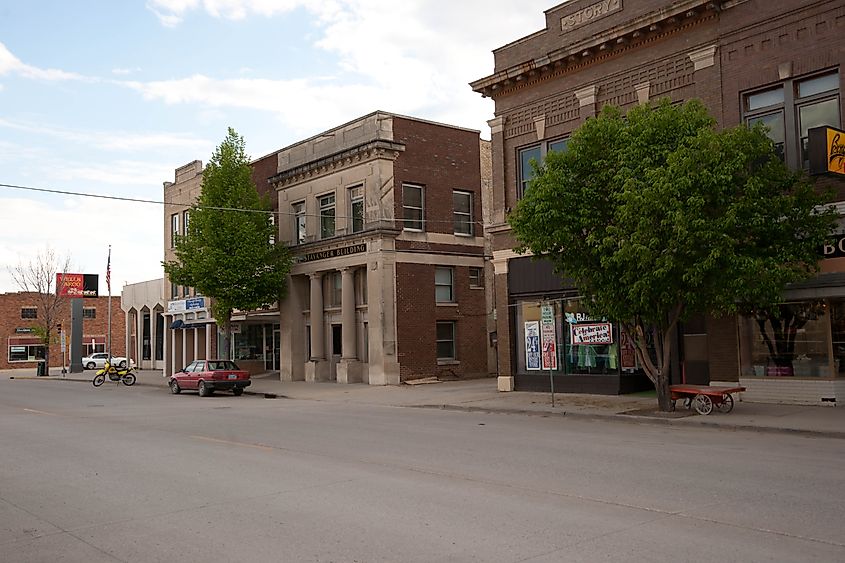
Valley City, nicknamed the “City of Bridges,” stretches gracefully along the Sheyenne River, where a series of historic crossings defines its skyline. The most impressive is the Hi-Line Railroad Bridge, a 3,860-foot-long engineering marvel that towers 162 feet above the riverbed and remains one of the nation’s longest and highest single-track railroad bridges. The Sheyenne River Valley National Scenic Byway winds through the town and beyond, revealing rolling hills, charming farmland, and landmarks that trace the heart of southeastern North Dakota.
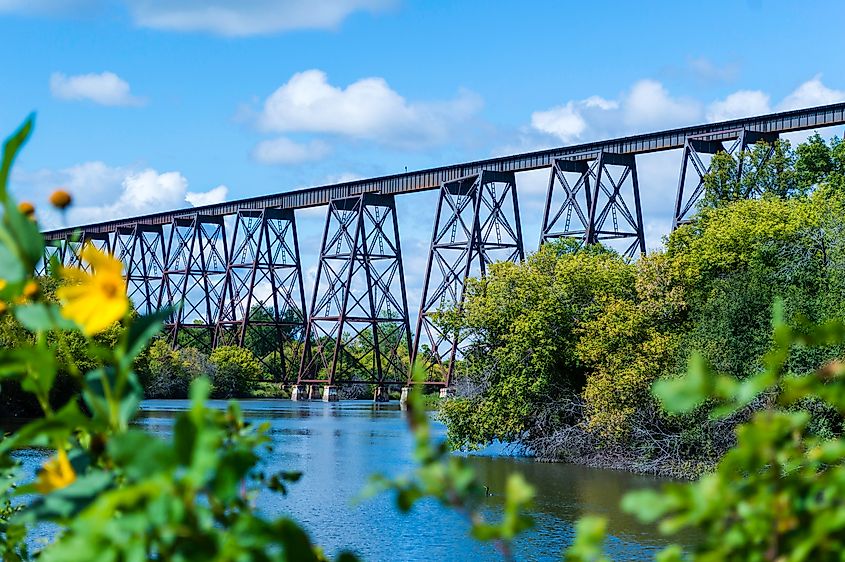
At Medicine Wheel Park, visitors can explore a 30-acre landscape that includes a solar calendar, Native American burial mounds, and interpretive trails surrounded by wildflowers. Nearby, Lake Ashtabula draws outdoor enthusiasts throughout the seasons. From summer boating and fishing to winter snowmobiling and birdwatching during migration, it is a peaceful retreat that captures the natural rhythm of life in this quiet North Dakota town.
Jamestown
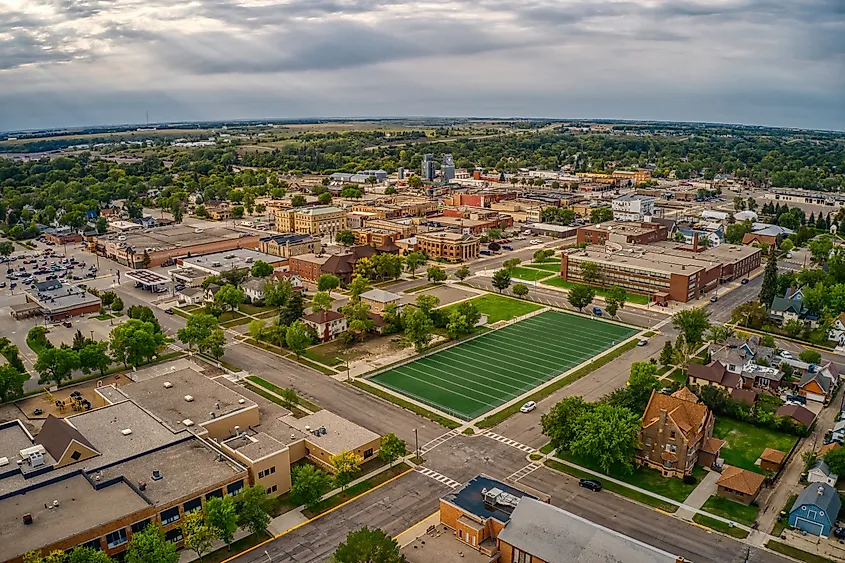
Jamestown, known as the “Pride of the Prairie,” was named by a railroad official after its location on the James River in Jamestown, Virginia. Anchoring the community is the Jamestown Reservoir, a chain of three interconnected lakes formed by the Jamestown Dam. These scenic waters serve as a hub for boating, fishing, and other recreational activities along the James River. Rising above the landscape, the World’s Largest Buffalo Monument stands 26 feet tall and weighs 60 tons; a concrete tribute to the region’s frontier spirit. Nearby, there are live bison at the North American Bison Discovery Center (formerly National Buffalo Museum).
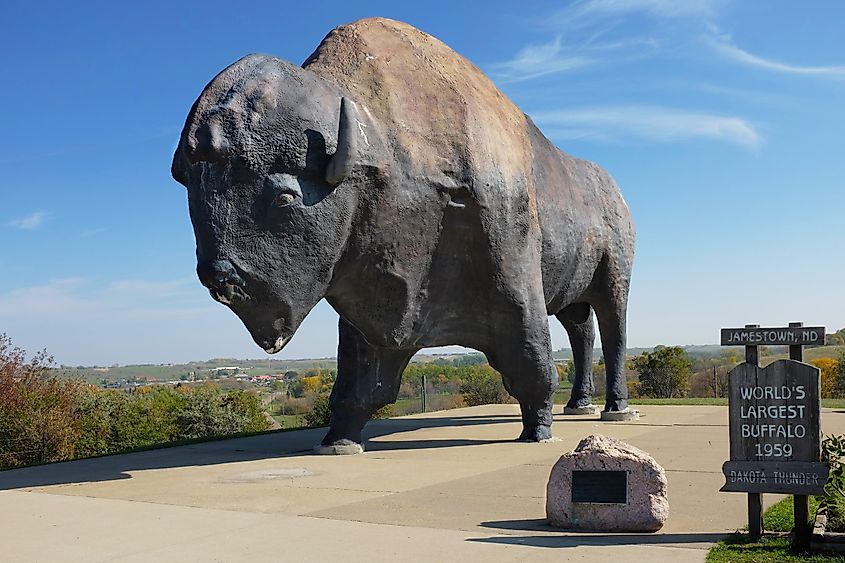
Step back in time at Frontier Village, a collection of authentic historic buildings filled with antiques, railroad relics, and local crafts. Then, pause for quiet reflection at Saint James Basilica, whose twin spires and welcoming congregation make it a landmark of faith and community in this distinctive prairie town.
Walhalla
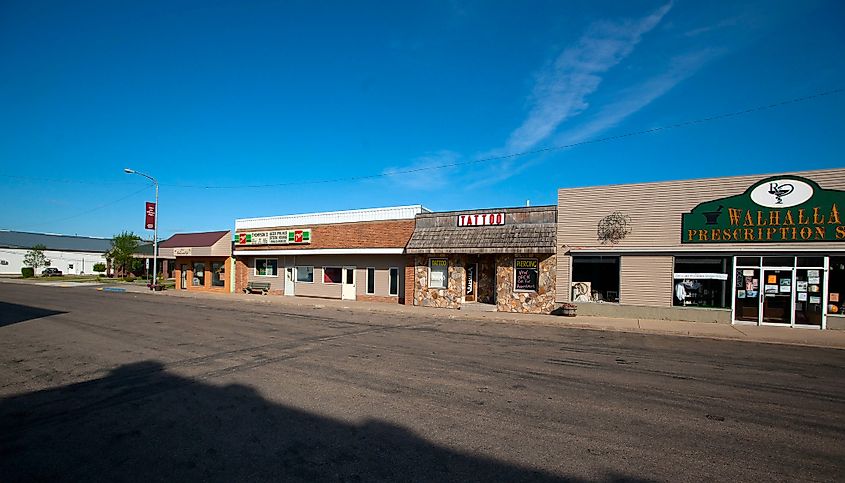
Anchored along the winding Pembina River in North Dakota’s far northeast, Walhalla is a peaceful escape surrounded by rolling hills and forested ridges. Just outside town, the Pembina Gorge State Recreation Area unfolds with miles of scenic trails for hiking, horseback riding, and mountain biking. At the same time, the river below draws kayakers through its striking landscape. Nearby, Frost Fire Park welcomes people year-round with skiing, mountain biking, and its lively Summer Theatre.
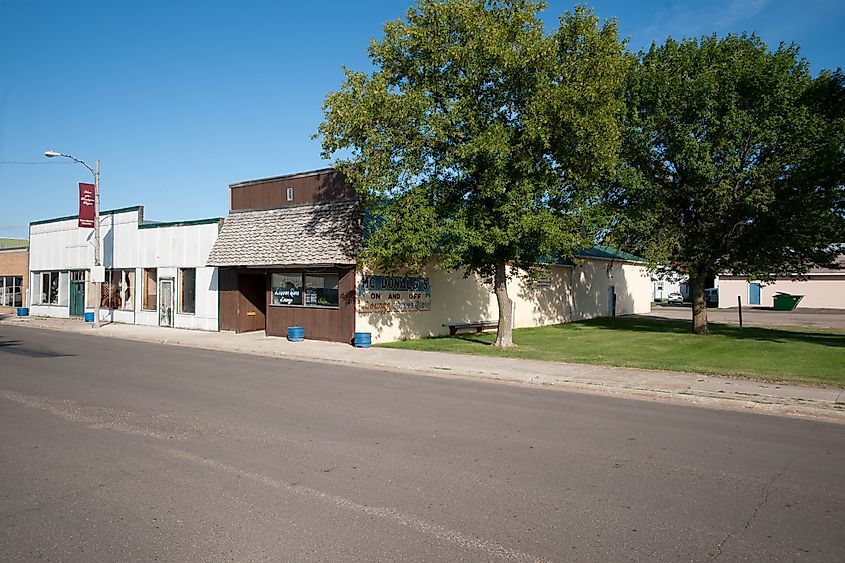
Within town limits, Riverside Park & Campground serves as a community favorite with picnic shelters, playgrounds, and river access for tubing and canoeing. Local gatherings fill the outdoor stage during warmer months, adding a small-town vibe to the natural beauty that surrounds it. Completing the scene, St. Boniface’s Church stands as a graceful landmark, reflecting the enduring heritage of this off-the-map river town.
New Town
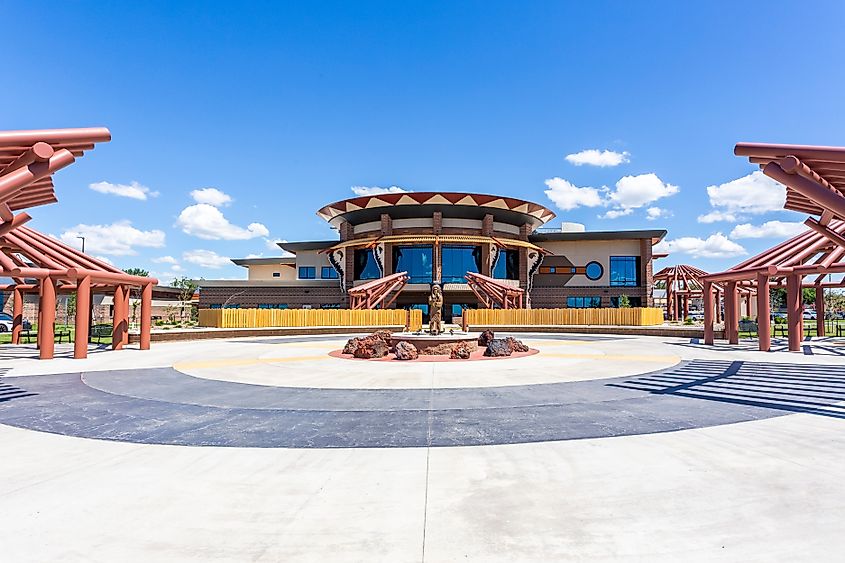
Set above the sweeping waters of Lake Sakakawea, New Town captures the cultural depth of northwestern North Dakota. From the Crow Flies High State Recreation Area, visitors take in panoramic views of Four Bears Bridge and the vast lake below, with hints of the old town of Sanish visible when water levels recede. The striking Four Bears Memorial Bridge, nearly a mile long, stands as both a modern engineering feat and a tribute to 19 tribal chiefs of the Mandan, Hidatsa, and Arikara Nations.
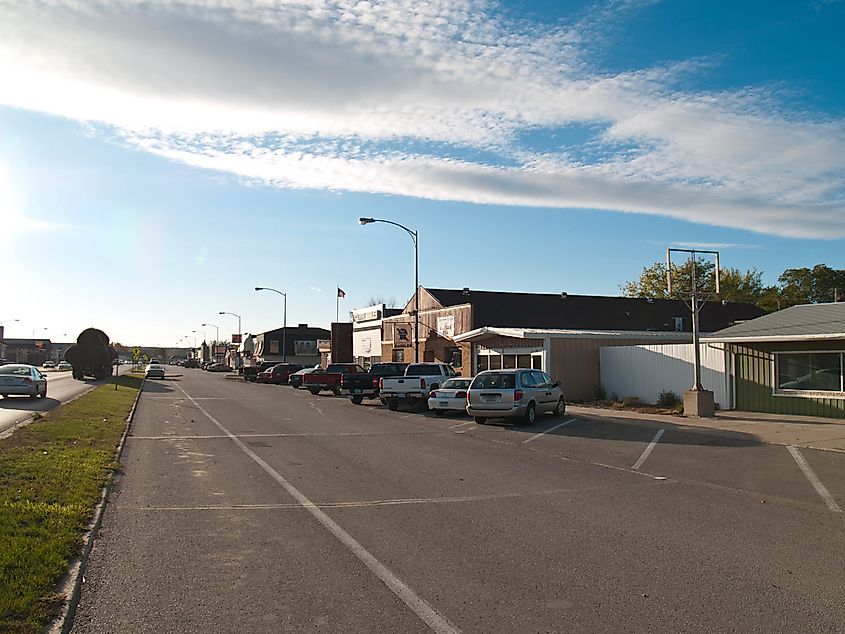
Nearby, the Three Affiliated Tribes Museum preserves the heritage of the region’s first inhabitants. Exhibits tell the story of the tribes who guided Lewis and Clark through this land in 1805, linking ancient traditions to the area’s living culture.
Rugby
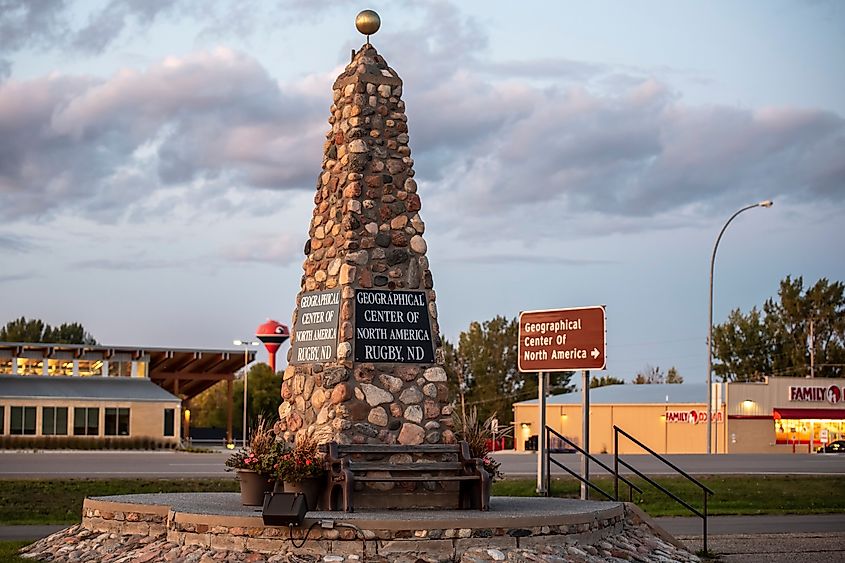
Rugby stands proudly as the Geographical Center of North America, a distinction marked by a 21-foot stone cairn set on a heart-shaped base. This landmark, built in 1932, celebrates the town’s place at the literal heart of the continent. Nearby, the striking Northern Lights Tower rises 88 feet into the sky, symbolizing the natural wonder of the Aurora Borealis often seen across the northern plains. Its adjoining interpretive center features vivid photographs and footage that capture the spectacle of the northern sky.
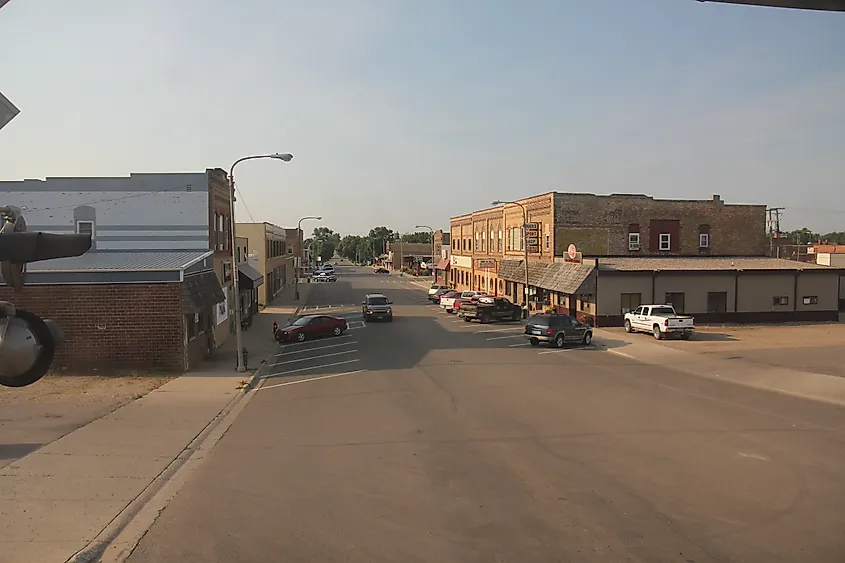
A few blocks away, the Prairie Village Museum brings history to life with over 20 restored buildings gathered around a small-town square. Visitors can explore antique vehicles, pioneer tools, and Native American artifacts that trace the story of North Dakota’s early days.
At the Heart of the Prairie
North Dakota’s lesser-known towns reveal a side of the state where history, landscape, and local pride intersect in timeless ways. From Valley City’s bridges spanning the Sheyenne River to Jamestown’s frontier legacy and New Town’s deep tribal heritage along Lake Sakakawea, each place carries its own story. Together, they reflect the enduring spirit of the prairie—quiet yet powerful—inviting travelers to see the beauty woven through its open skies and winding rivers.
